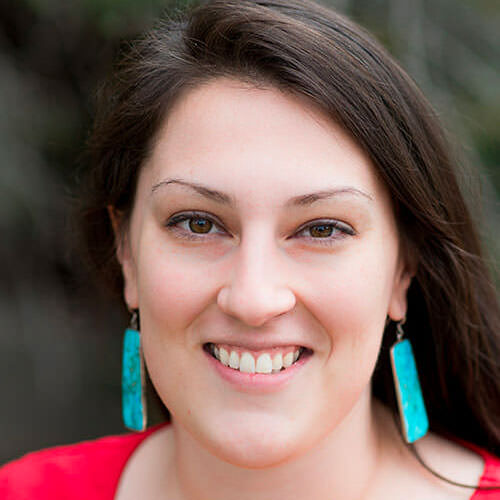
SPOTLIGHT ON INNOVATION SERIES
The US Department of Education has awarded multi-million dollar “First in the World” grants to 24 colleges and universities that are innovating to solve critical challenges with access, recruitment, retention, and student success. At AI, we have interviewed each of the recipients to learn more about the projects these institutions are pursuing, how their approaches are unique, and what other colleges and universities can learn from these new efforts.
“There is a body of research suggesting the importance of a ‘growth mindset’ and its application in a collegiate setting,” Josh Powers, Indiana State’s AVP for student success, and Liz Brown, professor in Indiana State’s Department of Mathematics and Computer Science, told us recently, citing the work of theorist Carol Dweck and colleagues at Stanford’s PERTS Research Center, which focuses on projects for education research that scale. “In a nutshell, a growth mindset is about the degree to which you believe you have the capability to achieve in a certain area through hard work.
“For example, in the area of math, there is an interesting American phenomenon where you either believe you ‘get it’ or you don’t, and that somehow intelligence is fixed. This is a challenge in different subject areas, but especially in math. In a number of other countries, this isn’t the case: the mentality elsewhere is that math may be a difficult subject, but that anyone can learn it if they work hard enough. For some in the US, however, a common belief is that intelligence is fixed.“
But intelligence is through hard work.
At Indiana State University, Powers and Brown believe that the necessity of encouraging a growth mindset may be the most critical key to cracking the case of college completion.
A Growth Mindset: Do We Often Discourage It?
“There’s this archetypal example,” Brown notes, “of a college classroom where on the first day the professor says something like, ‘Look at the person to your left, and now the person to your right; they won’t be here in a year” — in reference to the many students that drop classes or leave the institution. That doesn’t reinforce the growth mindset. Empowering a growth mindset is aimed at flipping a switch in the student’s brain: they need to know they belong in a college setting, and that they can learn through hard work. We need to reward the value and importance of hard work.”
Like many institutions, Indiana State has a high drop/fail/withdraw (DFW) rate in gateway math courses. That’s why they are developing interventions focused on empowering a growth mindset in these courses. Powers and Brown believe that these interventions can be the key to closing the achievement gap for low-income and first-generation students especially.
Their project, funded by a First in the World grant from the US Department of Education, will carefully track the progress of students (GPA, persistence) who receive an intervention against the progress of students in a control group, throughout the four years of their education. The initiative has two phases.
Phase 1: Shifting the Student Mindset
The intervention is being implemented this term, and will consist of these steps:
- Students in three types of gateway math courses (remedial, STEM, and non-STEM) will read an article about the growth mindset (or about something else, for those students in the control group)
- After reflecting on the article, the students will craft a letter to the next year’s students sharing their advice on how to be successful in college math
For now, this is primarily a learning and developmental exercise, and Indiana State University is exploring how best to share the actual letters with next year’s students. They are in conversation with the College Transition Consortium (their partners in this project) on how best to put the letters to good use.
The point of the exercise, Powers and Brown emphasize, is to transform how students think of themselves: “they are assets and are not coming from a place of deficit after all.”
From January 2015 to summer 2016, they also plan to work with several faculty in creating professional development materials — for Phase 2.
Phase 2: Equipping Faculty Across Campus
In Summer 2016, Indiana State will start offering faculty training and professional development on the growth mindset so that faculty across the institution — not only in the gateway math courses — can develop strategies and techniques for fostering that in their teaching. The plan is to offer a 1-2 day summer workshop prior to the start of fall 2015 classes. Faculty will then continue to have conversations following up on that training over the course of that first term.”Some faculty naturally have a growth mindset and others don’t,” Powers and Brown note, “but the initial reaction is that a lot of the faculty are interested in this initiative.”
“This intervention is powerful because it’s inexpensive to implement, scalable, and straightforward, not complicated.”
Josh Powers and Liz Brown, Indiana State University
Things to Think About on Your Campus
Powers and Brown look forward to sharing their findings with other institutions; this intervention, if successful, will also be highly replicable.
We asked Powers and Brown what advice they would offer now for other institutions that are interested in encouraging a growth mindset on their campus. They suggest “taking a hard look internally” at how your institution frames the identity of the student:
“You could be at Harvard or at a more accessible institution, but everyone wishes they had ‘better students.’ And there’s also this culture in higher education that students are on their own and have to sink or swim. We send powerful negative messages without realizing it. But students are in a developmental place; how do you move them from what they were to what they want to be?
“Part of our job as educators is to help students make that transition.
“We encourage other educators to think more intentionally about this, especially for new students, and especially for low-income students, first-generation students, students of color, who are more reluctant to ask for help because that may be seen as a sign of weakness.”
Josh Powers and Liz Brown, Indiana State University
The beauty of this approach is its simplicity and its potential for transforming the culture of a college campus. At AI, we are excited to watch the initiative proceed and study the findings once they’re shared!
What interventions are you trying at your own campus?



